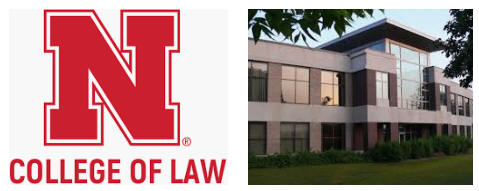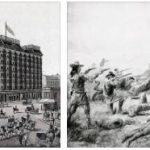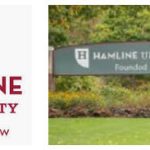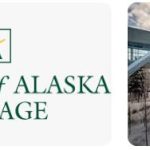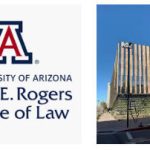We have created a 2019 ranking of the best colleges in Nebraska that offer Law degrees to help you find a school that fits your needs. Each school’s ranking is based on the compilation of our data from reliable government sources, student surveys, college graduate interviews, and editorial review. In addition, you can view our entire list of all law schools located within Nebraska. We also provide reviews, facts, and questions and answers for schools on our site and offer you access to get valuable information from colleges and universities today.
| Creighton University School of Law | Omaha, Nebraska |
|---|---|
| Score | N/A |
| Peer assessment score (5.0 highest) | 2.1 |
| Assessment score by lawyers/judges (5.0 highest) | 2.8 |
| 25th-75th percentile GPA scores for all students | 3.13-3.64 |
| 25th-75th percentile LSAT scores for all students | 151-156 |
| Overall acceptance rate | 56.4% |
| Student/faculty ratio | 17.6 |
| Graduates employed at graduation | 50.3% |
| Graduates known to be employed nine months after graduation | 92.4% |
| School’s bar passage rate for first-time test takers | 88.4% |
| State where the greatest number of first-time test takers took the bar | NE |
| Statewide bar passage rate for first-time test takers | 89.1% |
| University of Nebraska–Lincoln College of Law | Lincoln, Nebraska |
|---|---|
| Score | 43 |
| Peer assessment score (5.0 highest) | 2.5 |
| Assessment score by lawyers/judges (5.0 highest) | 2.9 |
| 25th-75th percentile GPA scores for all students | 3.29-3.82 |
| 25th-75th percentile LSAT scores for all students | 154-158 |
| Overall acceptance rate | 51.8% |
| Student/faculty ratio | 13.6 |
| Graduates employed at graduation | 64.2% |
| Graduates known to be employed nine months after graduation | 93.8% |
| School’s bar passage rate for first-time test takers | 90.8% |
| State where the greatest number of first-time test takers took the bar | NE |
| Statewide bar passage rate for first-time test takers | 89.1% |
About Nebraska
Nebraska was originally part of the covered wagon passing areas as they headed west through the Great Plains. In Northern Nebraska, the Great Plains are located east of the Rocky Mountains and west of Missouri. Hilly sandy areas characterize the landscape in the west and fertile loess soil in the east. The Badlands, a low-vegetation, desert-like landscape, is located in the extreme northwest of Nebraska.
The state’s highways largely follow the course of the Mormon and Oregon trails. Indian reservations can be found under the names Santee, Fox, Sac, Omaha and Winnebago. The official nickname of Nebraska is Cornhusker State, which means “state of the corn peelers”.
Nebraska facts
- Area: 200,520 sq km
- Population: 1,826,341
- Abbreviation: NE
- Capital: Lincoln
- Local time: UTC -7
- Nickname: Cornhusker State
Nebraska: climate and weather
In Nebraska there is a continental climate with cold winters and hot summers. Nebraska is influenced by the warm, humid climate from the Gulf of Mexico. Therefore, thunderstorms, hailstorms and cyclones occur more frequently.
A look back in history
At the time of the Wild West settlement in the 17th, 18th, and early 19th centuries, Nebraska was part of a territory known as the Great American Desert. This term describes the western part of the Great Plains, the largest mountain range east of the Rocky Mountains, which runs through several states in the Midwest, including Nebraska. The name of one of the most famous cities, Omaha, goes back to the Indian tribe of the same name. From 1700 to 1763, Nebraska was a French colonial area. In 1803, Nebraska was part of the ” Louisiana Purchase, ” with which the Americans bought an area of more than 2 million square kilometers for $ 251 million from the French. It is the largest property sale in American history.
The area at that time was, however, much larger than the current state territory of Louisiana. The former colony of Louisiana spanned the states up to the Canadian provinces of Manitoba, Alberta and Saskatchewan. In addition to Nebraska, the neighboring states of Missouri, Kansas, Iowa, Wyoming, South Dakota, Wyoming and parts of Colorado also belonged to this area. In 1834, Nebraska was declared an Indian Territory. However, this did not prevent the settlers who crossed the Oregon and California Trail from occupying this area. On March 1, 1867, Nebraska became the 37th state to join the American Union.
Nebraska is one of the largest agricultural producers in the United States. Therefore, this state also bears the nickname “Cornhusker State” (corn storage state). A hundred years ago, numerous buffalos roamed the prairie landscape. Today there are only a small number of them in the reserves. Hence the nickname “Beef” -State. Around 95 percent of the area is used for agriculture. There are numerous cattle ranches and farms here. Cereals, corn, oats and soybeans are also grown. Agriculture also lives from pig and poultry farming. The industry with different branches of activity contributes about 13 percent to the gross national product. In 1982 Bruce Springsteen released his album “Nebraska”.

